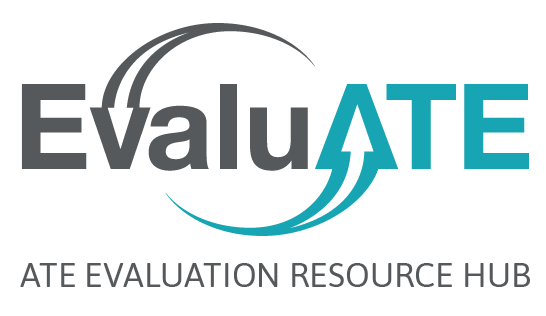
Greetings! We are Molly Henschel, Beth Perry, and Anne Cosby with Magnolia Consulting. We often use online surveys in our Advanced Technological Education (ATE) projects. Online surveys are an efficient data collection method for answering evaluation questions and providing valuable information to ATE project teams. Low response rates threaten the credibility and usefulness of survey findings. At Magnolia Consulting, we use proven strategies to increase response rates, which, in turn, ensures survey results are representative of the population. We offer the following four strategies to promote high response rates:
1. Ensure the survey is easy to complete. Keep certain factors in mind as you create your survey. For example, is the survey clear and easy to read? Is it free of jargon? Is it concise? You do not want respondents to lose interest in completing a survey because it is difficult to read or too lengthy. To help respondents finish the survey, consider:
-
-
- collaborating with the ATE project team to develop survey questions that are straightforward, clear, and relevant;
- distributing survey questions across several pages to decrease cognitive load and minimize the need for scrolling;
- including a progress bar; and
- ensuring your survey is compatible with both computers and mobile devices.
-
Once the survey is finalized, coordinate with program staff to send the survey during ATE-related events, when the respondents have protected time to complete the survey.
2. Send a prenotification. Prior to sending the online survey, send a prenotification to all respondents, informing them of the upcoming survey. A prenotification establishes survey trustworthiness, boosts survey anticipation, and reduces the possibility that a potential respondent will disregard the survey. The prenotification can be sent by email, but research shows that using a mixed-mode strategy (i.e., email and postcard) can have positive effects on response rates (Dillman, Smyth, & Christian, 2014; Kaplowitz, Lupi, Couper, & Thorp, 2012). We also found that asking the ATE principal investigator (PI) or co-investigators (co-PIs) to send the prenotification helps yield higher response rates.
3. Use an engaging and informative survey invitation. The initial survey invitation is an opportunity to grab your respondents’ attention. First, use a short and engaging subject line that will encourage respondents to open your email. In addition, follow best practices to ensure your email is not diverted into a recipient’s spam folder. Next, make sure the body of your email provides respondents with relevant survey information, including:
-
-
- a clear survey purpose;
- a statement on the importance of their participation;
- realistic survey completion time;
- a deadline for survey completion;
- information on any stipend requirements or incentives (if your budget allows for it);
- a statement about survey confidentiality;
- a show of appreciation for time and effort; and
- contact information for any questions about the survey.
-
4. Follow up with nonresponders. Track survey response rates on a regular basis. To address low response rates:
-
-
- continue to follow up with nonresponders, sending at least two reminders;
- investigate potential reasons the survey has not been completed and offer any assistance (e.g., emailing a paper copy) to make survey completion less burdensome;
- contact nonresponders via a different mode (e.g., phone); or
- enlist the help of the ATE PI and co-PI to personally follow up with nonresponders. In our experience, the relationship between the ATE PI or co-PI and the respondents can be helpful in collecting those final surveys.
-
Resources:
Nulty, D. (2008). The adequacy of response rates to online and paper surveys: What can be done? Assessment & Evaluation in Higher Education, 33(3), 301–314.
References:
Dillman, D. A., Smyth, J. D., & Christian, L. M. (2014). Internet, mail, and mixed-mode surveys: The tailored design method (4th ed.). New York: Wiley.
Kaplowitz, M. D., Lupi, F., Couper, M. P., & Thorp, L. (2012). The effect of invitation design on web survey response rates. Social Science Computer Review, 30, 339–349.

Except where noted, all content on this website is licensed under a Creative Commons Attribution-NonCommercial-ShareAlike 4.0 International License.







 EvaluATE is supported by the National Science Foundation under grant number 2332143. Any opinions, findings, and conclusions or recommendations expressed on this site are those of the authors and do not necessarily reflect the views of the National Science Foundation.
EvaluATE is supported by the National Science Foundation under grant number 2332143. Any opinions, findings, and conclusions or recommendations expressed on this site are those of the authors and do not necessarily reflect the views of the National Science Foundation.